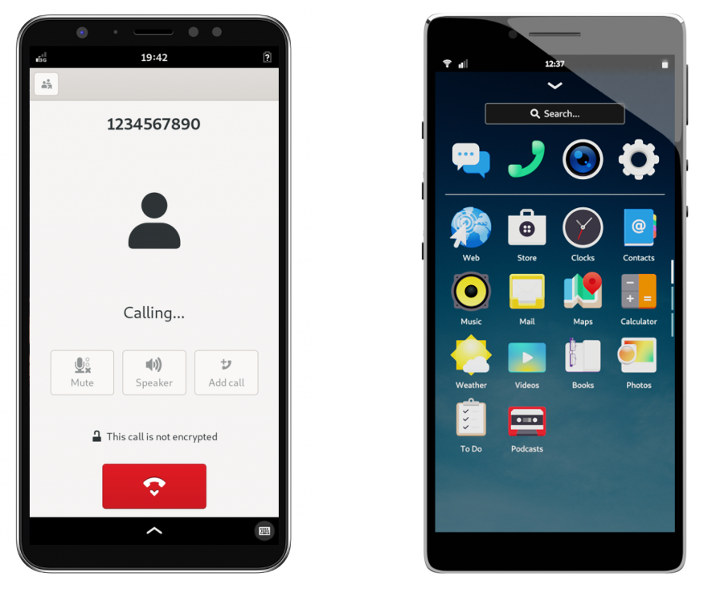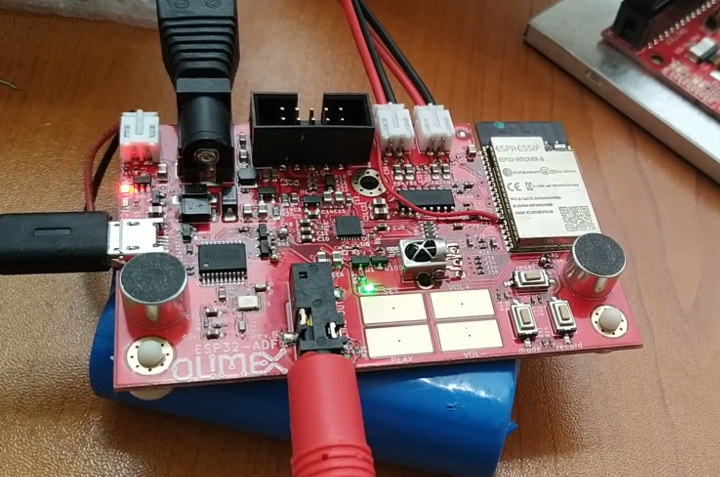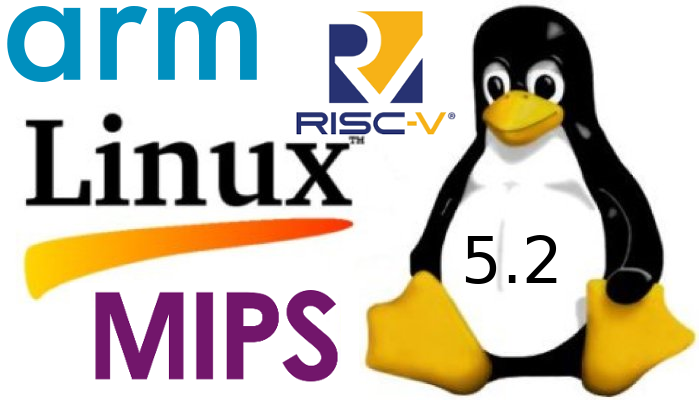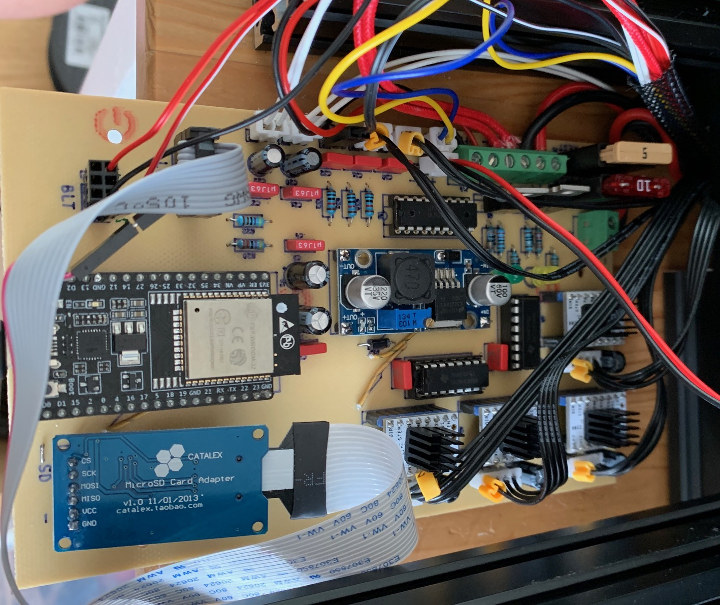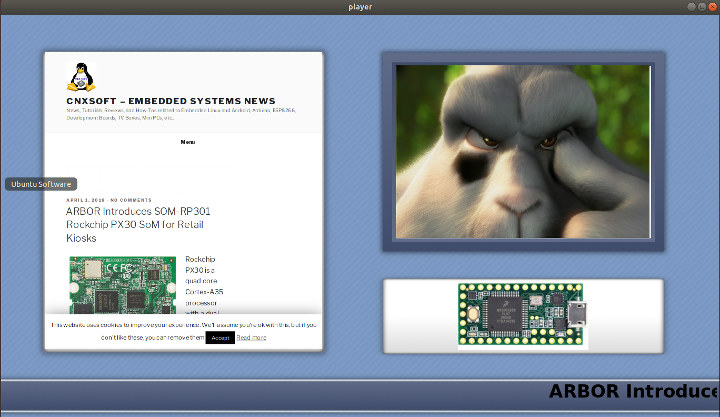If you were interested in purchasing, or more exactly pre-ordering, a privacy-focused, open source Linux smartphone with clearly defined hardware specifications, Purism Librem 5 was not quite for you. Until today that is, as while the company did not commit to exact specifications at the beginning of the project, Purism has now revealed the full specifications of Librem 5 Linux smartphone. Librem 5 specifications: SoC – NXP i.MX8M quad-core Cortex A53 @ up to 1.5GHz, Cortex-M4 real-time core, 3G GPU with OpenGL/ES 3.1, Vulkan, OpenCL 1.2 support System Memory – 3GB RAM Storage – 32GB eMMC flash, MicroSD slot up to 2 TB Display- 5.7″ IPS TFT touchscreen with 1440×720 resolution Connectivity Cellular Option 1 – Gemalto PLS8 3G/4G modem w/ single sim on replaceable M.2 card Option 2 – Broadmobi BM818 (made in China) nanoSIM tray Dual-band 802.11a/b/g/n WiFi 4, Bluetooth 4.0 GPS – Teseo LIV3F GNSS Cameras – […]
Olimex ESP32-ADF Board is Made for Smart Speakers, Internet Radios, VoIP Phones, and More
We’ve already covered several (smart) audio boards based on ESP32 WiSoC, including the Espressif’s own ESP32-LyraTD-MSC Audio Mic HDK, as well as third party boards such as TTGO TAudio or Seeed Studio ESP32-A1S all compatible with the company’s ESP-ADF (Audio Development Framework) compatible with Baidu DuerOS, Google Assistant and Amazon Alexa. Olimex ESP32-ADF adds another ESP32 audio option, and AFAIK the first one that is open source hardware, with two speakers, and a dual-microphone that enable projects such as Alexa smart speaker, internet radio receiver, or SiP VoIP phone. Olimex ESP32-ADF specifications: Wireless Module – ESP32-WROVER-B with 8MB PSRAM, 4MB Flash, WiFi 4 and Bluetooth 4.2 LE Audio Stereo microphones Stereo 2x3W speakers with amplifier Audio output jack Display – UEXT connector for optional 2.8″ LCD display USB – 1x micro USB port for power supply and programming Misc – IR receiver, 4x touch buttons, 3x tactile buttons Build-in programmer […]
Linux 5.2 Release – Main Changes, Arm, MIPS & RISC-V Architectures
Linus Torvalds announced the release of Linux 5.2 last Sunday: So I was somewhat pre-disposed towards making an rc8, simply because of my travels and being entirely off the internet for a few days last week, and with spotty internet for a few days before that [*]. But there really doesn’t seem to be any reason for another rc, since it’s been very quiet. Yes, I had a few pull requests since rc7, but they were all small, and I had many more that are for the upcoming merge window. Part of it may be due to the July 4th week, of course, but whatever – I’ll take the quiet week as a good sign. So despite a fairly late core revert, I don’t see any real reason for another week of rc, and so we have a v5.2 with the normal release timing. There’s no particular area that stands […]
Google Fuchsia Operating System Gets its own Developer Website
Google has been developing Fuchsia open source operating system based on Zircon kernel for several years. It’s still unclear what’s the end goal. Will it replace Android or/and Chrome OS, ditching the Linux kernel for Zircon in the process? We don’t know, and Google claims its an experimental endeavor. Only the future will tell. We’ve had access to the source code since 2016, but Google has now launched a dedicated developer website for Fuchsia: fuchsia.dev This is year 2019, and Google being a Western company it should not be surprising the first part of the documentation is a Code of Conduct, but there’s also plenty of technical documentation with a glossary, getting started guide, building instructions, an overview of the OS, code samples, and instructions to contribute either by testing or submitting changes to Gerrit. Fuchsia is strictly a 64-bit operating system at this stage with support for Arm64 and […]
Open Source ESP32 3D Printer Board Supports Marlin 2.0 Firmware
Espressif ESP32 processor was initially designed for cost-sensitive IoT projects thanks to its built-in WiFi & Bluetooth connectivity and low price, but the WiSoC’s fairly powerful two Xtensa cores found other uses such as face detection and audio applications among others. But a few people are now collaborating to bring ESP32 to the world of 3D printers with an open source hardware RepRap 3D printer controller board that has beta support in Marlin 2.0 RC1 firmware. There’s no commercially available ESP32 3D printer controller board right now, so only prototypes from the community are available. There are mainly two version of the boards: R1 and R2 designed by Simon Jouet, and at least one member – Felixstorm – made his own R2 board from the MIT licensed KiCad based design. R2 is a better design leveraging ESP32’s I2S interface to have more output pins and improve stepping. Felixstorm connected the […]
Kazan Software Vulkan Implementation is Optimized for RISC-V Processors
More and more people want to run fully open source systems due to philosophical, privacy and security concerns, but on embedded systems with a GPU is often hard to achieve due to closed-source binary blobs. Projects such as Freedreno and Etnaviv have freed Qualcomm Adreno and Vivante GPUs, but it takes years to implement workable reverse-engineered open source GPU drivers. One solution to get an open source graphics driver from the get-go is to implement the rendering into the CPU, but the problem is that it’s usually really slow, and GPU’s are much faster thanks to their ability to quickly handle parallel tasks. Kazan is a software-rendering Vulkan implementation, but it may be eventually end up as a low-end soft-GPU in some RISC-V SoCs thanks to specific instructions. I found out about Kazan through the Libre RISC-V M-Class chip project that aims to be a low-power, mobile-class, 64-bit quad-core SoC […]
More Investments into RISC-V – Qualcomm Backs SiFive, OpenHW Group Created
Some may doubt RISC-V will ever challenge Arm at least in some markets, but the industry is investing in solutions based on the royalty-free open source ISA, with this week SiFive securing $65.4 Million from various investors including Qualcomm Ventures LLC, and the announcement of the launch of the OpenHW Group, a new not-for-profit global organization aims to boost the adoption of open-source processors currently backed by 13 companies, and aiming to reach 25 sponsors by year’s end. SiFive gets more interest from investors Here’s the main part of the announcement of SiFive’s new series D funding: SiFive, Inc., the leading provider of commercial RISC-V processor IP and silicon solutions, today announced it raised $65.4 million in a Series D round led by existing investors Sutter Hill Ventures, Chengwei Capital, Spark Capital, Osage University Partners and Huami, alongside new investor Qualcomm Ventures LLC. This Series D round brings the total […]
Xibo Player for Linux Released (Open Source Digital Signage Player)
Xibo is an open source digital signage software comprised of a CMS and a player/client. Xibo CMS has always worked on both Windows and Linux, but in recent years, Xibo Client only worked on Windows, Android, and WebOS with the latter two being paid apps. Many years ago there was a Python-based Xibo player working in Linux but it was abandoned. However, recently the company restarted the development of a Linux player, and I even tried Xibo Player and CMS on MINIX NEO Z83-4U mini PC, but at the time the player was at the alpha stage and not very stable at least with the layout I experimented with. Around two months have passed, and the developers must have worked out the quirks, as Xibo Player for Linux has now been released, and just like the Windows player it’s entirely free to use, and open source (C++ code) under the […]


